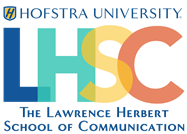By Micaela Erickson
At the beginning of March, an email from Hofstra President Stuart Rabinowitz announced the university’s plan to resume full in-person instruction in the fall. With vaccines becoming more accessible, a return to a normal learning environment grows increasingly promising.
Following a year of remote and hybrid learning, students and faculty alike said they are eager to return to a semblance of normalcy. Hofstra’s dean of students, Dr. Gabrielle St. Leger, spoke about the university’s hopes for the coming fall semester.
“Our goal is to be in person and have a full collegiate on-campus experience where we’re fully engaging and not in a two-dimensional state,” St. Leger said.
Students are far from the only ones eager to return to the normal college experience. Dr. Andrea Libresco, distinguished professor of teaching, learning and technology, said she looks forward to returning to a typical class structure and having more fulfilling class discussions.
“I have no hesitations about coming back to campus full time. I’m delighted at the prospect of doing so,” Libresco said. “The default when people are online is mute, so I’m very excited about coming back full time in classes.”An interview with Hofstra University’s Dr. Andrea Libresco, distinguished professor of teaching, learning and technology, on returning to in-person classes this fall.
After her experiences with both fully remote and hybrid courses, Libresco said she believes the “default” of mute and camera off during class is ineffective for both students and professors. Though the default can be frustrating, Libresco said she understand the situation that students are in.
“I feel for these students. I think it’s not pleasant to take your classes online. I think it’s harder to pay attention,” Libresco said. “I think it’s harder to feel part of a larger whole, so it’s hard for students, and I really feel for them.”
Leah Chiappino, a 20-year-old journalism and political science student from Smithtown, expressed her eagerness to return to in-person classes.
“I’m looking forward to moving back in person,” Chiappino said. “All of my classes have been remote since last March, not by choice, but that was just the way my schedule worked out.”
While fully remote learning was not ideal for Chiappino, she noted how Zoom made it easier to work and keep up with campus involvement.
“I commute, so I didn’t have to drive to and from campus every day. There was no way I would’ve been able to work a job and internship on top of classes and clubs,” Chiappino said. “It’s easier to balance things like work and class when you don’t have to travel places, so I hope stuff like that isn’t lost.”
Zoom has presented a new ease within scheduling that was not there prior. Though many are experiencing “Zoom fatigue” and burnout, remote learning has been a helpful option and would continue to serve a purpose well after the pandemic’s end, students said.
Sinjita Bhattacharya, a 19-year-old sociology major from Montgomery, N.J., said she has benefited from remote options over the past year. Bhattacharya and her family are in high risk categories for Covid-19, and they have been working or attending school from home for the past year.
“The idea of going back to a normal school environment feels a little better now that I’ve gotten my first dose of the vaccine,” Bhattacharya said. “Something that does worry me, though, is professors and students seeming to be really gung-ho on getting rid of Zoom.”

Bhattacharya said knowing that Zoom lectures would be recorded alleviated a a great deal of anxiety and stress for her throughout the pandemic. She is concerned that this option will not be as readily available once schools transition back to primarily in-person learning. Recorded lectures allow students to go back and take more thorough notes and catch up on information they might have missed, or might not have fully grasped to begin with.
Bhattacharya started her first year of college in the midst of the pandemic, and she said how Zoom also gave her the opportunity to connect easily with professors and advisers.
“At the beginning of last semester, I was constantly in meetings with professors, department chairs and advisers,” Bhattacharya said. “It just made everything a lot more accessible and easy to plan instead of having to run from place to place.”
Another question raised by students was whether Hofstra would require students to receive a Covid-19 vaccination before returning to campus in the fall.

“As of right now, there’s been no decision made,” St. Leger said. “If [a decision is made] one way or the other, we will come up with clear messaging to help students understand what we would need.”
While there is still no word on Covid-19 vaccines being mandatory, Hofstra has hosted a Northwell Health vaccination pod on campus. Students have been able to schedule appointments to receive either the Pfizer-BioNTech or Moderna vaccines, easily allowing at least 2,000 students to be vaccinated.
As the school year comes to an end, excitement continues to build around what the 2021–22 academic year might have in store. The return to full in-person learning will likely be far from the pre-pandemic “normal,” but will be a definite change for the better, students and professors agreed.









